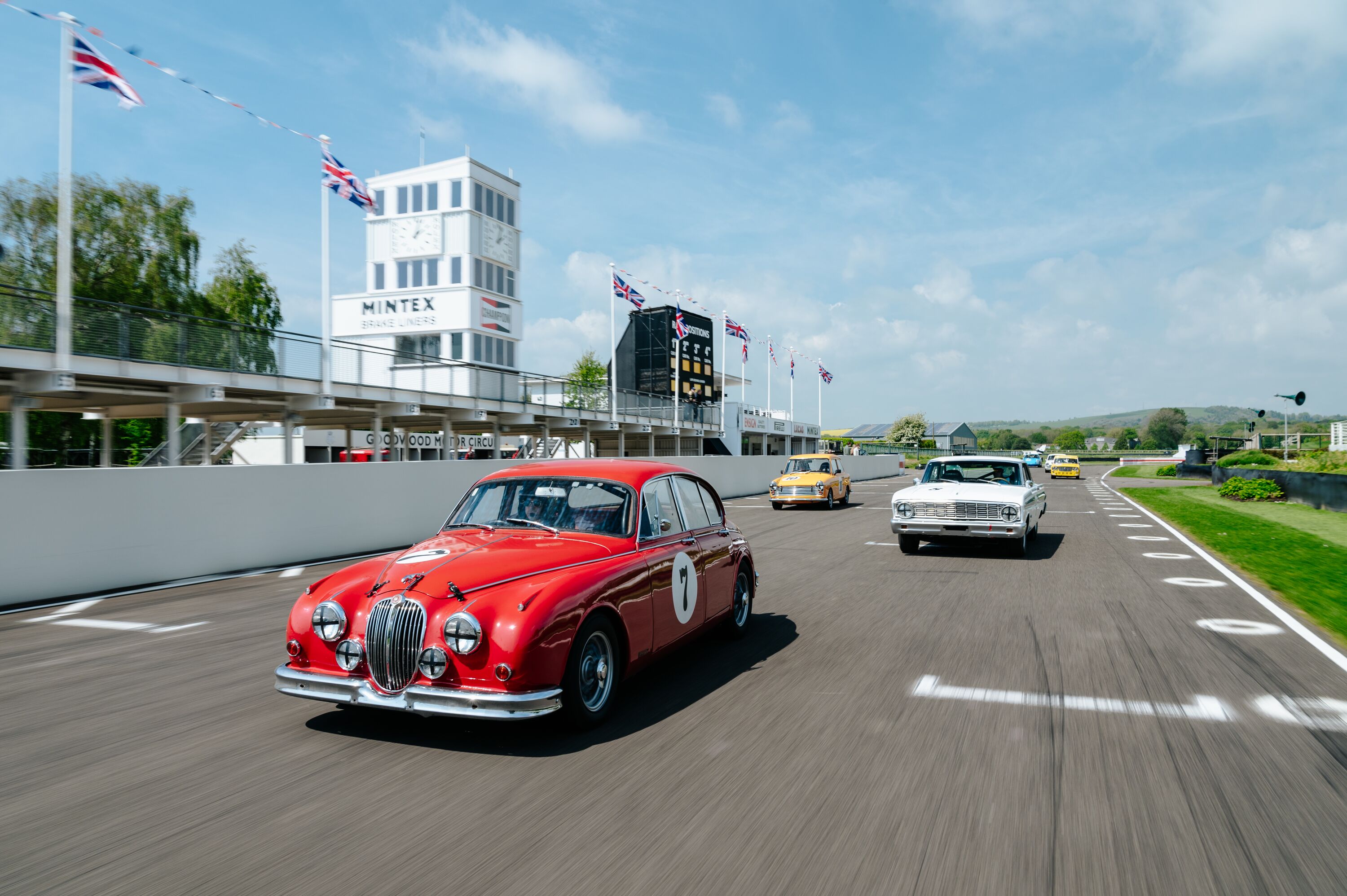Formula 1’s stand-out stand-ins
Every now and then, a regular Formula 1 driver is unable to race, and when teams are forced to find someone to sit in the result is often a heady mix of a cameo driver working hard to make an impression to secure a permanent seat, much to the upset of established drivers. On other occasions, however, they prove exactly why they don’t have a permanent seat. Here are some of the most memorable stand-ins from F1 history.

Mansell rejoins Williams in 1994
‘Our Nige’ made his return to Williams following the tragic death of Ayrton Senna. With Williams’ Damon Hill and Benetton’s Michael Schumacher vying for the title, F1 would have been left with no champions on the grid had it not been for his return. The West Midlands born racer had his own agenda, though. Attempting to secure a permanent seat with Williams, he needed to impress without interrupting team-mate Hill’s shot at the Championship.
Mansell struggled with starts having spent the previous season racing in IndyCar with rolling starts and with traction control in F1 prior to 1994. Even so, he was able to claim victory in Australia, thanks to the infamous coming together between Schumacher and Hill. In the end, it was David Coulthard who got the permanent Williams drive for ‘95, while Mansell moved to McLaren for a short-lived two races. That win in Australia would prove to be his final F1 victory.

Bearman scores seventh on F1 debut
What were you driving when you were 18? Ollie Bearman was sitting in for Carlos Sainz Jr. at the wheel of a Ferrari SF-24 as the youngest ever Brit to race in F1. He also became the third youngest driver in history, yet he drove with a maturity that betrayed his teenage years.
From the very off of the 2024 Saudi Arabian Grand Prix he was pushing for position. Starting in 11th, Bearman got the better of Zhou Guanyu’s Sauber and Nico Hülkenberg’s Haas, and successfully defended against the advances of Lando Norris and Lewis Hamilton. By then he had made his way to seventh, leaving his countrymen to fight among themselves for eighth and ninth place.
Afterward, Bearman’s team-mate Charles Leclerc said: “He completely deserves it. He has done an incredible job. To finish seventh in your first race in F1 in a new car is incredibly impressive. Everyone has noticed how talented he is, and it is just a matter of time before he is in F1.” And not much time at that. Within months he had secured a permanent seat with Haas.
Mixed results for Mario Andretti
Former World Champion Mario Andretti was committed to IndyCar for the 1982 season, but that didn’t prevent him making two cameo F1 appearances. The first was in the seat formerly occupied by Williams driver Carlos Reutmann before his abrupt retirement. Standing in for the British team at United States Grand Prix West in Long Beach, California, where the street circuit had been revised, a lack of time to practice contributed to a lacklustre performance that ended in retirement.
When Andretti received a call from Enzo Ferrari to step in at Monza the team had endured a torrid season so far. Gilles Villeneuve was killed in an accident in Zolder, while team-mate Didier Pironi suffered serious injuries three months later at Hockenheim while leading the Championship. For this stand-in, there was more time for Andretti to prepare.
He’d need it, too, given that he didn’t want to disappoint the Tifosi on home turf. His first outing in a turbocharged F1 car saw him come home third, helping Ferrari on its way to the 1982 Constructors’ Championship.

Hill’s promotion from sportscars to F1
American Phil Hill joined Ferrari after meeting US importer Luigi Chinetti in the early 1950s. He first drove for the team in endurance races, and claimed the first of three Le Mans 24 Hour victories, in 1958 alongside team-mate Olivier Gendenien. Enzo Ferrari believed the introverted Hill had the wrong temperament for single-seater racing, but following the deaths of Luigi Muss and Peter Collins it was he who completed the 1958 F1 World Championship.
In 1960, Hill had his first F1 win at Monza, and the following year he would duel for the title at the same venue with Wolfgang von Trips. Hill won the Championship and became the first American to do so, but there was no celebration. Von Trips collided with Jim Clark’s Lotus, the German’s car subsequently cartwheeled into the crowd. He was killed, as were 14 spectators. Hill, who would be a pallbearer at Von Trips’ funeral, described it as a mournful experience, a metaphor for his love/hate relationship with the sport.

De la Rosa’s sole McLaren podium
McLaren’s long-serving test driver Pedro de la Rosa had his chance to race competitively when Juan Pablo Montoya departed F1 in favour of NASCAR mid-way through the 2006 season. Hungary was the stage for the Spaniard’s best ever F1 finish.
Rain fell for the opening laps, making it the first ever wet Hungarian Grand Prix. A fairly chaotic race ensued, with tyre changes and safety cars mixing up the order almost constantly until the flag fell. When it did, Honda’s Jenson Button had claimed his first ever race win and De la Rosa had secured his first (and only) podium with a second-place finish.
There were suggestions his cameo might have led to a permanent seat for 2007, but eventually it was Lewis Hamilton who joined McLaren to race alongside Fernando Alonso. De la Rosa resumed his test driver role which he managed alongside a commentary job for Spanish television.

Larini sits in for Alesi in San Marino
Race classifications from the 1994 San Marino Grand Prix seem scarcely relevant against the backdrop of that weekend’s events. As anyone who watched the race will recall with regrettable clarity, it was overwhelmed by tragedy. Roland Ratzenberger died from his injuries in Saturday’s qualifying, which led to many drivers withdrawing from the rest of the session.
One of them was Ayrton Senna, who was emotionally moved by the events to the extent that Professor Sid Watkins urged him to give up racing. The Brazilian driver carried an Austrian flag in his Williams which he intended to unfurl at the end of the race in honour of Ratzenberger.
But that was never to be. On lap five, his Williams struck a concrete barrier and Senna was instantly killed. When the race was restarted it was won by Michael Schumacher, with the Ferrari of Italian driver Nicola Larini, standing in for Jean Alesi, following for a second place and the first points of his F1 career. It would be his only F1 podium finish from 49 starts.

Russell has victory snatched in Hamilton’s Mercedes
George Russell substituted for a Covid-positive Lewis Hamilton at the 2020 Bahrain Grand Prix, while Jack Aitken took Russell’s place at Williams. And Russell’s Mercedes debut got off to a very strong start; on lap one he passed team-mate Valtteri Bottas and dominated the early stages of the race.
But fate had different ideas. Both Mercedes drivers pitted under a safety car for a tyre change, and Russell was mistakenly sent out on an illegal mix of compounds. He returned to the pitlane one lap later for the error to be corrected, and when he rejoined he had slipped to fourth place. A challenge for the lead may have been surmountable, but then a puncture led to another pitstop. That dropped him to ninth and fleeting hopes of a debut F1 win were over. Afterwards, a magnanimous Russell accepted it as part of racing, but at least he had scored his first ever F1 points.

Salo’s near win in Schumacher’s Ferrari
Before F1, Mika Salo rose through the ranks with no small amount of success. A career with backmarker teams, however, looked like it would stymie further progress. After a fruitless year with Arrows in 1998, he was unable to secure a drive for the following season.
That was until Ferrari found itself needing someone to take the place of Michael Schumacher who was out for six rounds having broken his legs. Salo’s assignment was made clear by Jean Todt: help Eddie Irvine towards the team’s first Drivers’ Championship since Jody Scheckter’s in 1979.
At the German Grand Prix, Salo found himself in the lead, having previously finished only as high as fourth. It was only a matter of time before the call came over the radio. He backed off to let his Irish team-mate through, Irvine won and Salo took second. A further podium before the season was out helped contribute to Ferrari’s Constructors’ Championship, while Irvine took the Drivers’ Title.
Images courtesy of Getty Images.
formula 1
f1
Nigel Mansell
Oliver Bearman
mario andretti
Phil Hill
pedro de la rosa
nicola larini
George Russell
Mika Salo








